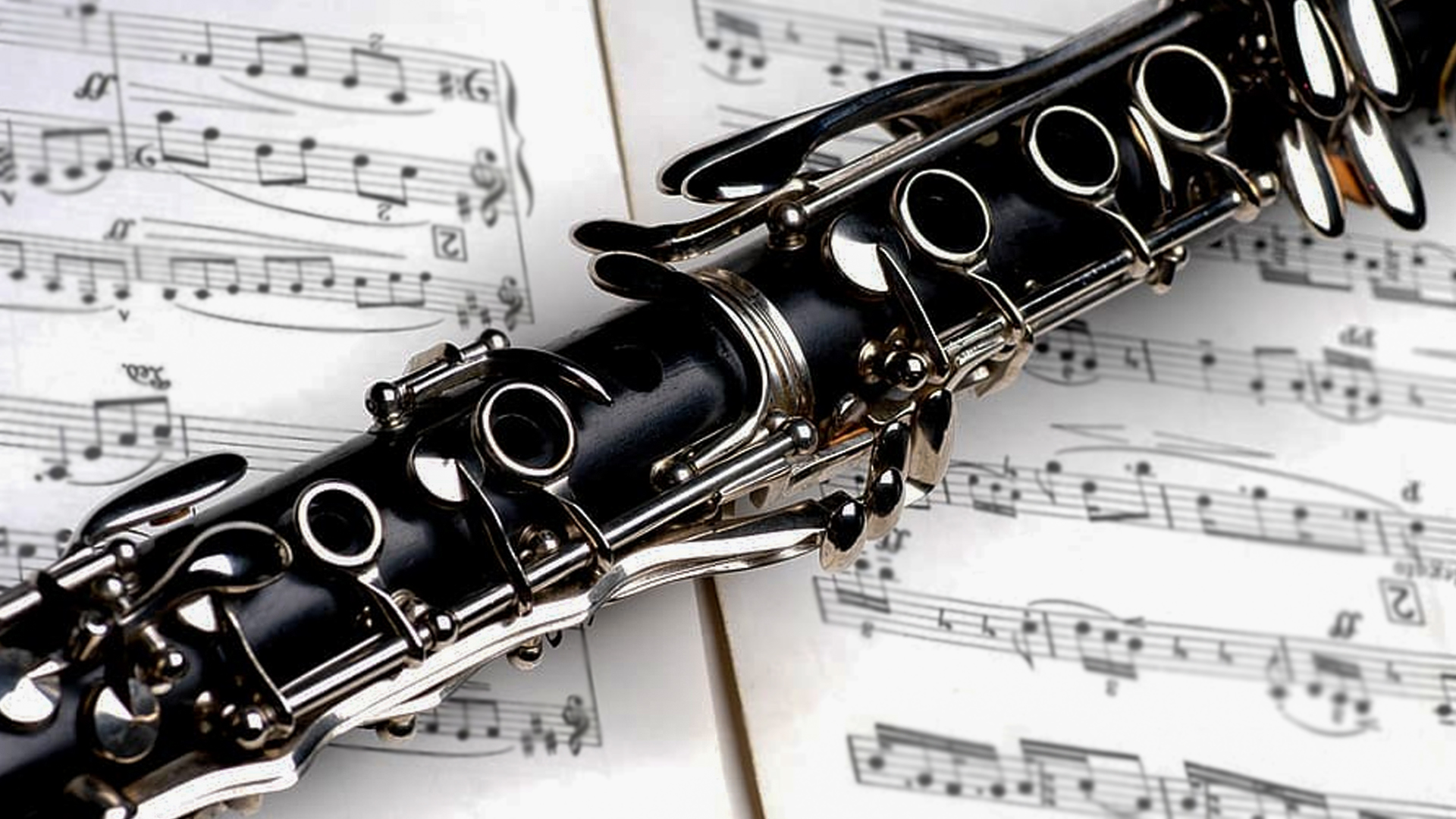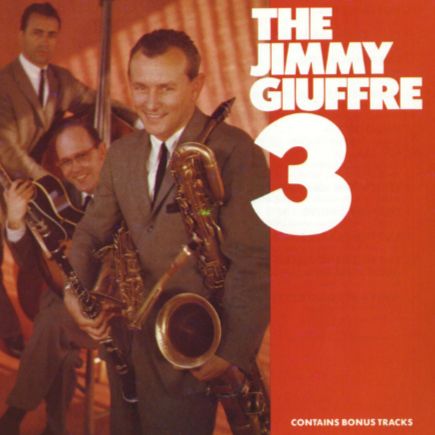Jimmy Giuffre: entre West Coast, folk et avant-garde
Jimmy Giuffre occupe une place singulière dans l’histoire du jazz, à la fois ancré dans le mouvement West Coast et précurseur de courants plus intimistes et expérimentaux. Clarinettiste, saxophoniste (ténor et baryton) et compositeur, il est surtout reconnu pour son approche novatrice du trio sans piano et pour sa capacité à effacer les frontières entre jazz, musique de chambre et folk américain. Son jeu, empreint de douceur et de retenue, tranche avec les élans plus flamboyants de ses contemporains, affirmant un style profondément introspectif et poétique.
Originaire de Dallas, il commence à étudier la clarinette à l’âge de neuf ans et maîtrise rapidement l’instrument. Il passe ensuite au saxophone ténor et obtient en 1942 un diplôme de musique à l’université d’État du Texas. Pendant son service militaire, il joue de la clarinette et du saxophone dans un orchestre militaire et, à sa libération en 1946, il rejoint le Dallas Symphony, où il joue du saxophone ténor dans Porgy and Bess.
Jimmy Giuffre se fait ensuite remarquer comme arrangeur et saxophoniste au sein de l’orchestre de Woody Herman, où il signe Four Brothers (1947), un thème devenu emblématique du cool jazz. Rapidement, il s’éloigne des grandes formations pour explorer des formats plus réduits et intimistes.
Son trio de 1957 avec Jim Hall (guitare) et Ralph Peña (contrebasse), puis celui de 1961 avec Paul Bley (piano) et Steve Swallow (contrebasse), redéfinissent la notion d’interaction musicale. Ces ensembles privilégient la subtilité, l’écoute mutuelle et les nuances dynamiques, anticipant à bien des égards le jazz de chambre et les approches minimalistes de la décennie suivante.
Jimmy Giuffre puise également dans le folk et les musiques traditionnelles américaines, intégrant des mélodies simples et des rythmes dépouillés dans un langage jazz sophistiqué. Cette synthèse se retrouve dans des albums comme The Jimmy Giuffre 3 (1957), Traditionalism Revisited (1957, avec Bob brookmeyer) ou Fusion (1961), qui témoignent de sa volonté d’élargir les horizons du jazz sans renoncer à l’improvisation.
Dans les années 1960, son travail en trio avec Bley et Swallow marque une avancée audacieuse vers l’abstraction, préfigurant le free jazz européen. Bien que longtemps sous-estimée, cette période est aujourd’hui saluée pour son caractère visionnaire. Figure discrète mais essentielle, Jimmy Giuffre incarne un jazz intimiste, fait de respiration et d’espace, où chaque note compte.
Jimmy Giuffre: entre la Costa Oeste, el folk y la vanguardia
Jimmy Giuffre ocupa un lugar singular en la historia del jazz, arraigado en el movimiento de la Costa Oeste y precursor de corrientes más íntimas y experimentales. Clarinettista, saxofonista (tenor y barítono) y compositor, es especialmente reconocido por su enfoque innovador del trío sin piano y por su capacidad de borrar las fronteras entre el jazz, la música de cámara y el folk estadounidense. Su estilo, impregnado de suavidad y contención, contrasta con los impulsos más espectaculares de sus contemporáneos, afirmando un langage profundamente introspectivo y poético.
Originario de Dallas, comenzó a estudiar clarinete a los nueve años y rápidamente dominó el instrumento. Luego pasó al saxofón tenor y obtuvo en 1942 un título en música en la Universidad Estatal de Texas. Durante su servicio militar, tocó clarinete y saxofón en una banda militar y, al ser licenciado en 1946, se unió a la Dallas Symphony, donde tocó el saxofón tenor en Porgy and Bess.
Giuffre llamó la atención como arreglista y saxofonista en la orquesta de Woody Herman, donde compuso Four Brothers (1947), tema icónico del cool jazz. Pronto dejó las grandes formaciones para explorar formatos más reducidos e íntimos.
Su trío de 1957 con Jim Hall (guitarra) y Ralph Peña (contrabajo), y posteriormente el de 1961 con Paul Bley (piano) y Steve Swallow (contrabajo), redefinieron la interacción musicale. Estos conjuntos privilegiaban la sutileza, la escucha mutua y las dinámicas refinadas, anticipando el jazz de cámara y las aproximaciones minimalistas que marcarían la década siguiente.
Giuffre también se inspiró en el folk y en las músicas tradicionales estadounidenses, incorporando melodías simples y ritmos austeros a un lenguaje jazzístico sofisticado. Esta síntesis se refleja en álbumes como The Jimmy Giuffre 3 (1957), Traditionalism Revisited (1957, con Bob Brookmeyer) y Fusion (1961), que muestran su afán de ampliar los horizontes del jazz sin renunciar a la improvisación.
En los años sesenta, su trabajo en trío con Bley y Swallow dio un paso audaz hacia la abstracción, anticipando el free jazz europeo. Aunque durante mucho tiempo fue subestimada, esta etapa es hoy reconocida por su carácter visionario. Figura discreta pero esencial, Jimmy Giuffre encarna un jazz intimista, hecho de respiración y espacio, donde cada nota tiene un peso significativo.
Jimmy Giuffre: tra West Coast, folk e avanguardia
Jimmy Giuffre occupa una posizione unica nella storia del jazz, radicato nel movimento della West Coast e precursore di correnti più intime e sperimentali. Clarinetista, sassofonista (tenore e baritono) e compositore, è particolarmente noto per il suo approccio innovativo al trio senza pianoforte e per la sua capacità di abbattere le barriere tra jazz, musica da camera e folk americano. Il suo stile, caratterizzato da dolcezza e misura, contrasta con i toni più spettacolari dei suoi contemporanei, affermando un linguaggio profondamente introspettivo e poetico.
Originario di Dallas, iniziò a studiare clarinetto a nove anni, padroneggiando rapidamente lo strumento. Passò poi al sassofono tenore e nel 1942 conseguì un diploma in musica presso la Texas State University. Durante il servizio militare suonò clarinetto e sassofono in una banda militare e, congedato nel 1946, entrò nella Dallas Symphony, suonando il sassofono tenore in Porgy and Bess.
Giuffre si fece notare come arrangiatore e sassofonista nell’orchestra di Woody Herman, dove compose Four Brothers (1947), tema diventato simbolo del cool jazz. Ben presto abbandonò le grandi formazioni per esplorare contesti più ristretti e intimi.
Il suo trio del 1957 con Jim Hall (chitarra) e Ralph Peña (contrabbasso), e quello del 1961 con Paul Bley (pianoforte) e Steve Swallow (contrabbasso), ridefinirono il concetto di interazione musicale. Questi ensemble privilegiavano la sottigliezza, l’ascolto reciproco e le sfumature dinamiche, anticipando il jazz da camera e le tendenze minimaliste della decade successiva.
Giuffre attinse anche dal folk e dalle tradizioni americane, integrando melodie semplici e ritmi essenziali in un linguaggio jazz sofisticato. Questa sintesi è evidente in album come The Jimmy Giuffre 3 (1957), Traditionalism Revisited (1957, con Bob Brookmeyer) e Fusion (1961), che riflettono il suo desiderio di ampliare i confini del jazz senza rinunciare all’improvvisazione.
Negli anni Sessanta, il suo lavoro in trio con Bley e Swallow segnò un passo audace verso l’astrazione, anticipando il free jazz europeo. Pur a lungo sottovalutato, questo periodo è oggi celebrato per il suo carattere visionario. Figura discreta ma fondamentale, Jimmy Giuffre incarna un jazz intimo, fatto di respiro e spazi, in cui ogni nota assume un valore particolare.
Jimmy Giuffre: between West Coast, folk, and the avant-garde
Jimmy Giuffre holds a unique place in jazz history, rooted in the West Coast movement while pioneering more intimate and experimental directions. A clarinetist, saxophonist (tenor and baritone), and composer, he is best known for his innovative approach to the piano-less trio and his ability to blur the lines between jazz, chamber music, and American folk. His style, marked by gentleness and restraint, stands apart from the more flamboyant tendencies of his contemporaries, offering a deeply introspective and poetic voice.
Born in Dallas, he began studying clarinet at the age of nine and quickly mastered the instrument. He later took up the tenor saxophone and earned a music degree from Texas State University in 1942. During his military service, he played clarinet and saxophone in an army band, and upon his discharge in 1946, he joined the Dallas Symphony, performing tenor saxophone in Porgy and Bess.
Giuffre gained recognition as an arranger and saxophonist in Woody Herman’s orchestra, where he wrote Four Brothers (1947), a defining piece of cool jazz. He soon moved away from large ensembles to focus on smaller, more intimate formats.
His 1957 trio with Jim Hall (guitar) and Ralph Peña (bass), followed by his 1961 trio with Paul Bley (piano) and Steve Swallow (bass), redefined musical interaction. These groups emphasized subtlety, mutual listening, and dynamic nuance, foreshadowing chamber jazz and the minimalist approaches that would emerge in the following decade.
Giuffre also drew from folk and traditional American music, weaving simple melodies and stripped-down rhythms into a sophisticated jazz language. This synthesis is evident in albums such as The Jimmy Giuffre 3 (1957), Traditionalism Revisited (1957, with Bob Brookmeyer), and Fusion (1961), all showcasing his drive to expand jazz’s horizons without abandoning improvisation.
In the 1960s, his trio with Bley and Swallow ventured boldly toward abstraction, prefiguring European free jazz. Long underestimated, this period is now celebrated for its visionary character. A discreet yet essential figure, Jimmy Giuffre embodied an intimate jazz built on breath and space, where every note truly mattered.



